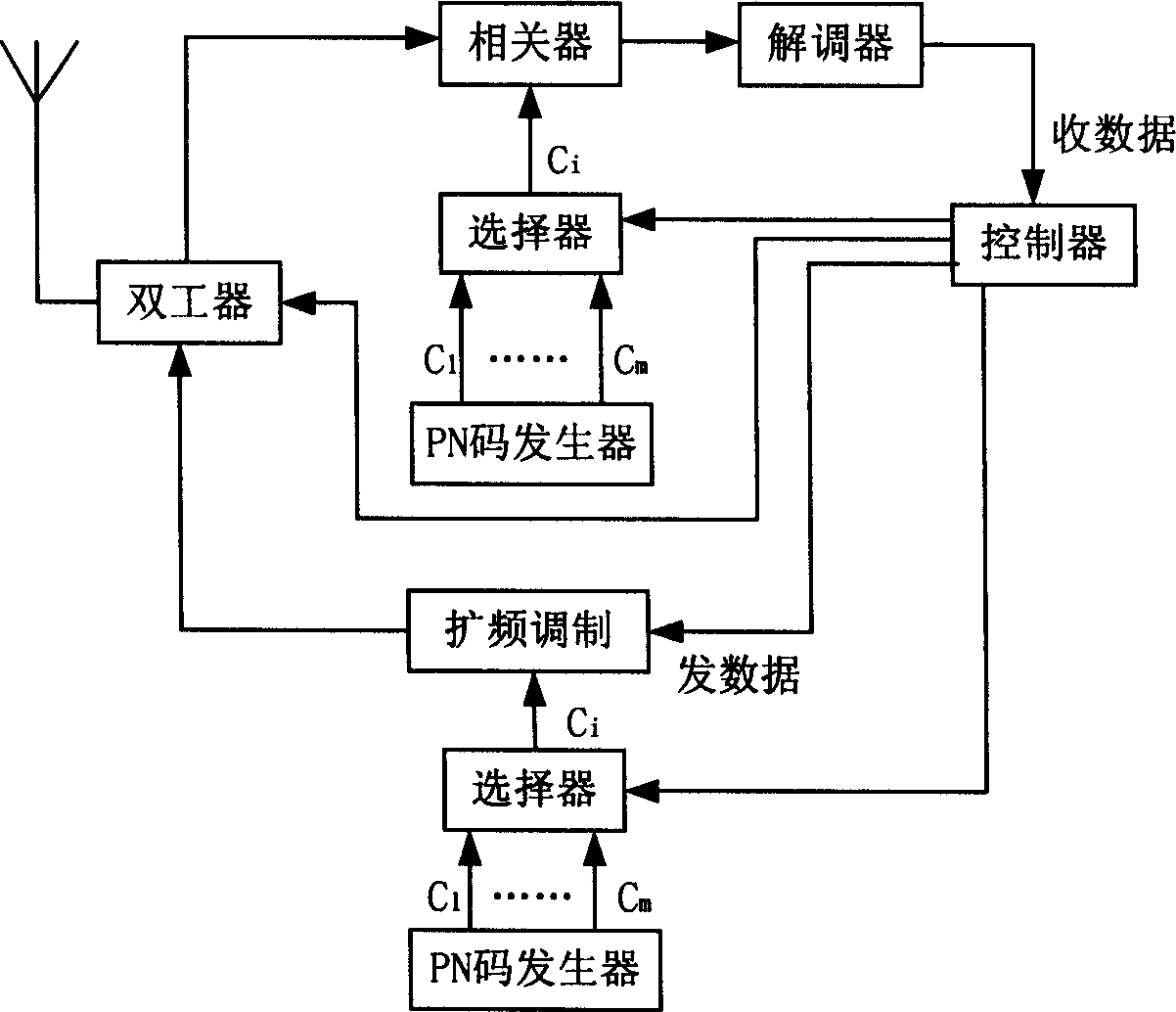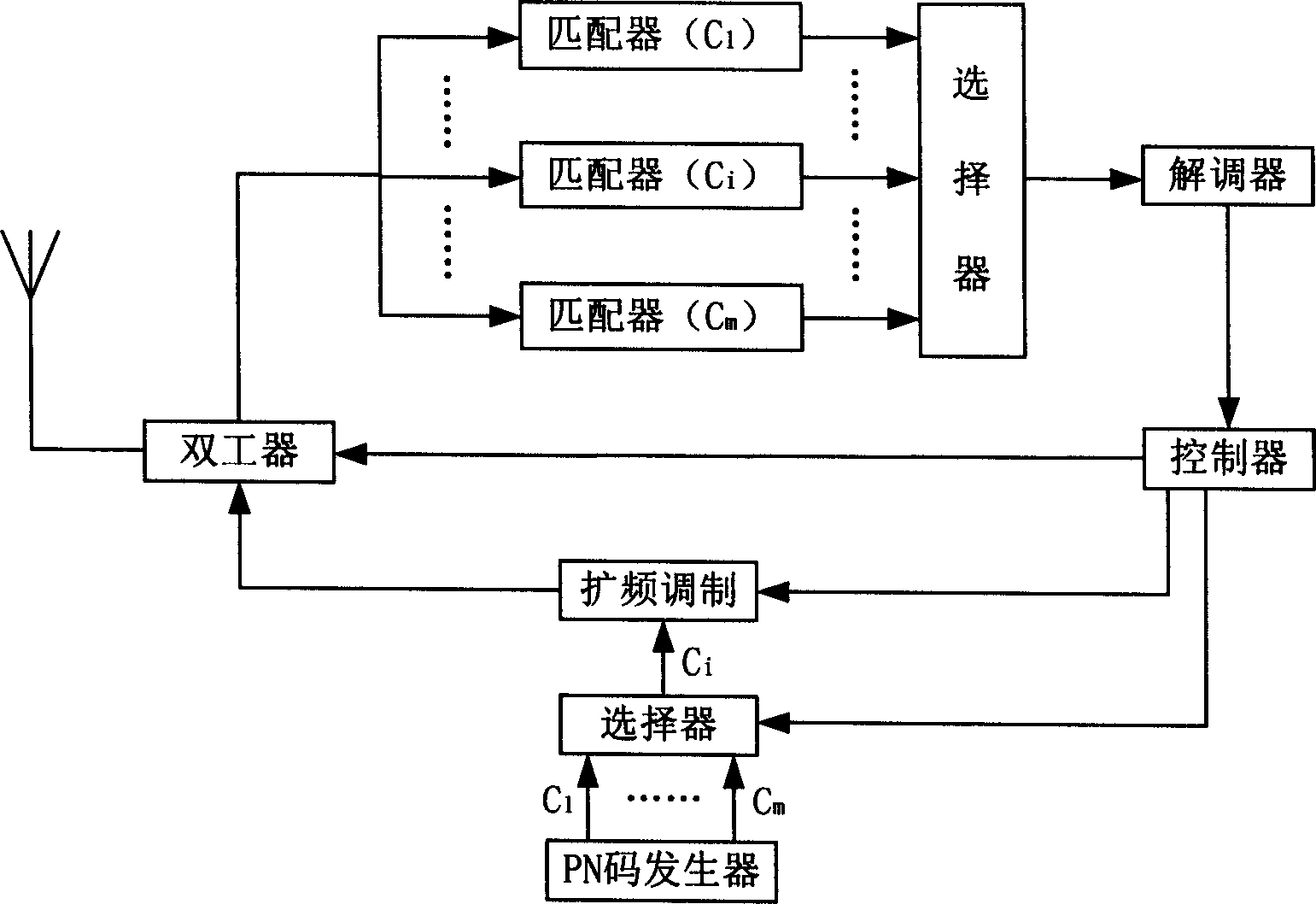Spread spectrum communicatoion system and non-centre wireless network for implementing CDMA by single different phase sequence of spread spectrum code
A communication system and code division multiple access technology, applied in the field of spread spectrum communication systems, can solve the problems of impossibility of dynamic code allocation, unresolved problems of hidden terminals and exposed terminals, practical implementation difficulties, etc.
- Summary
- Abstract
- Description
- Claims
- Application Information
AI Technical Summary
Problems solved by technology
Method used
Image
Examples
Embodiment Construction
[0073] A preferred example of the present invention is described in detail as follows in conjunction with accompanying drawing:
[0074] Figure 5 Represents a centerless wireless network that implements code division multiple access with different phase sequences of a single spreading code. A and B, C and D are adjacent nodes and communicate with each other. H and E are adjacent nodes of A, but they are idle and have no data to send. Except for H, B, E, other nodes are outside the coverage area of node A, and cannot directly receive the data packets sent by node A, and can only be forwarded by other nodes, such as figure 1 In the instance of B, it can be forwarded to O node. In a general decentralized wireless network, E and F in the figure cannot communicate at the same time. In the present invention, E and F can communicate on different channels at the same time.
[0075] Figure 6 Shown is a block diagram of the spread spectrum communication system of a node. The ...
PUM
 Login to View More
Login to View More Abstract
Description
Claims
Application Information
 Login to View More
Login to View More - R&D
- Intellectual Property
- Life Sciences
- Materials
- Tech Scout
- Unparalleled Data Quality
- Higher Quality Content
- 60% Fewer Hallucinations
Browse by: Latest US Patents, China's latest patents, Technical Efficacy Thesaurus, Application Domain, Technology Topic, Popular Technical Reports.
© 2025 PatSnap. All rights reserved.Legal|Privacy policy|Modern Slavery Act Transparency Statement|Sitemap|About US| Contact US: help@patsnap.com



